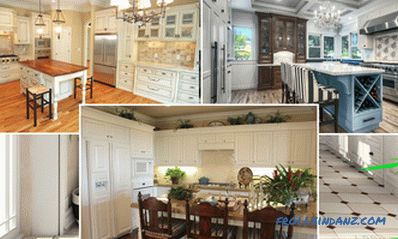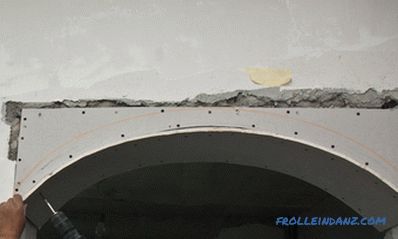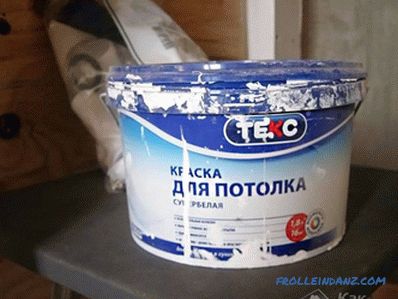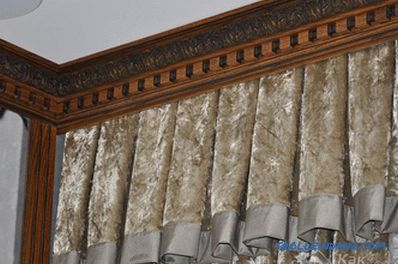Today, constructions made of various materials are used to protect suburban areas and suburban areas: stone, metal, corrugated flooring and various types of wood. However, more often the owners of houses or cottages are thinking about how to make a fence from unedged boards - affordable and original fence that looks harmoniously against any landscape. In addition, such facilities are performed easily and quickly, do not require the use of special equipment and tools, lengthy preparation and expensive materials from the performers.
Main technical and operational features of the material
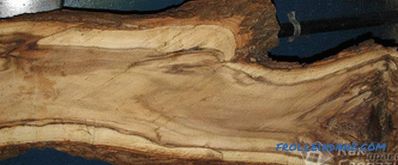 Texture of the unedged board
Texture of the unedged board
As one Of the cheapest and most affordable sawn timber, unedged board is a product with partially sawed or completely uncut sawn. For its production mainly use hardwood and coniferous wood. Experts recommend for the construction of fences to give preference to larch, which is best suited for external structures and gains maximum strength in a wet environment. The most unstable type of board is birch wood. Unedged board for the construction of fences are selected taking into account several factors:
- The structure of the board. Experts do not advise to buy boards with knots, as they are less tolerant of climatic and operational loads.
- Cutting quality. On the outer surfaces of the wood should not be clearly chipped and potholes, which complicate the process of material processing.
- The presence of cracks. This defect appears as a result of improper storage or drying of the material and may adversely affect the service life of the structure.
- The cross section of the tree should look as correct and harmonious as possible.
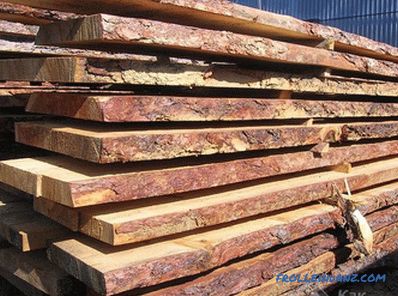 Unedged boards
Unedged boards
Before you make a fence from an unedged board, be sure to cover the wood special protective and antiseptic formulations. In addition, such impregnations give the material a beautiful, sophisticated tone, emphasizing the color and texture favorably. The compositions should be purchased only from reliable and trusted manufacturers, with the availability of specialized certificates of quality and environmental safety.
Material preparation
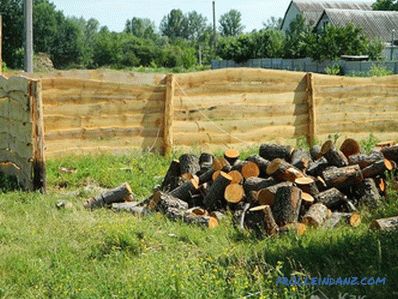 Installation of the fence
Installation of the fence
For the construction of a fence from a non-edging board, to procure and bring to the site a profile tube for support columns with a cross section of 40x60 mm and a length of at least 3 meters. The total number of metal blanks depends on the complexity of the design and the size of the site. For the construction of the fence, select a high-quality unedged board with a width of 200 mm or more, a length of 2 meters or more, and a thickness of 20 mm. To deepen the support pillars, materials for the base and the concrete mortar should be prepared: cement, sand and crushed stone, as well as small pieces of reinforcement.
Like any other construction, the construction of the fence begins with careful measurements of the site and the planning of the territory. Based on the actual parameters of the site and the individual characteristics of its relief, they outline the location and height of the supporting pillars, future gates and wickets.
For load-bearing structures, the most affordable and easiest-to-process material is a metal pipe. Additional foundations for the fence of unedged boards is not required due to its lightness and integrity of the structure.
The base of the supporting pillars is immersed in the soil, having previously made a preparatory cushion of sand and crushed stone in the ground. Depending on the characteristics of the soil on the site and the height of the fence, the depth of the pillars can be from 0.8 to 1.2 meters. The most optimal distance between the supports - 2.5 meters. Fixed pillars with concrete solution. While the concrete is gaining the necessary strength, the supports can be coated on top with a special anti-corrosion compound and painted in a pleasant color with moisture-resistant paint.
Technology of mounting the elements of the fence from the unedged board
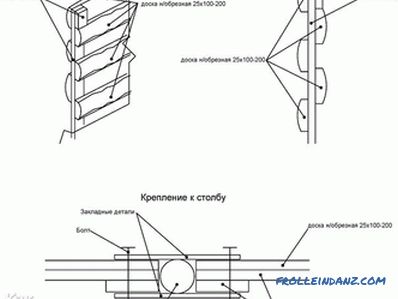 The scheme of mounting the fence
The scheme of mounting the fence
On At the final stage, transverse elements — horizontal lags — are attached to the prepared supports. In the future, they will be fixed boards. If according to a predetermined project, the main coverage is planned to be placed horizontally with an overlap or butt, then vertical support elements are additionally attached to the preliminary crate, with a step of 0.6-0.8 meters.
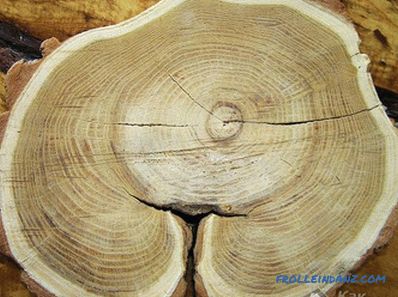 Paths from cuts
Paths from cuts
Knowing how to make a fence from an unedged board and doing all the work strictly technology, you can decorate your territory with a stylish and spectacular design that will be in harmony with the wooden elements of a gazebo or landscape design.
Rough processing and relief forms of unedged boards will become a real decoration of the surrounding space, which can be stylishly complemented with paths made of saw cuts or small walling structures in flowerbeds.
Video
In the following video, see an interesting way to install a fence, which can also be done from unedged boards:
